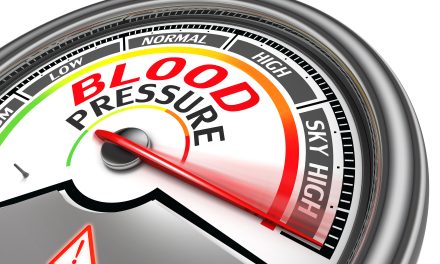Weight loss is often seen as a positive step toward better health, but it can have unexpected effects such as impacting blood pressure.
Weight loss can cause low blood pressure, particularly if the weight loss is rapid or achieved through unhealthy means. This drop in blood pressure can lead to symptoms like dizziness, fainting, and fatigue.
Understanding the dynamics between weight loss and blood pressure is crucial.
While reducing weight can help manage high blood pressure, it’s important to avoid dropping to levels that might result in low blood pressure.
Each person’s body reacts differently to changes in diet and exercise, so it’s essential to monitor blood pressure during and after weight loss efforts.
To manage this, individuals should be aware of potential symptoms and seek medical advice if concerns arise.
With careful planning and professional guidance, weight loss can still be pursued safely without adverse effects on blood pressure.
Key Takeaways
- Weight loss can lower blood pressure significantly.
- Rapid or unhealthy weight loss may lead to low blood pressure.
- Monitoring is essential during weight loss to avoid health issues.
Understanding Blood Pressure
Blood pressure is a measure of the force that blood exerts on the walls of arteries as it circulates throughout the body. It consists of two key measurements: systolic pressure and diastolic pressure.
Understanding these measurements and what causes fluctuations can help in identifying differences between conditions like hypertension and hypotension.
Blood Pressure Basics
Blood pressure is expressed in two numbers, written as systolic over diastolic.
Systolic pressure is the top number and represents the pressure when the heart beats.
Diastolic pressure is the bottom number, showing the pressure when the heart is at rest between beats.
Blood pressure readings classify values into different categories. Normal blood pressure is typically below 120/80 mm Hg. High blood pressure, or hypertension, starts at 130/80 mm Hg or above.
Monitoring blood pressure is crucial for detecting potential health issues. Regular checks can help identify if someone is heading toward high or low blood pressure, allowing for early intervention.
Causes of Blood Pressure Fluctuations
Blood pressure can vary due to various factors.
Diet plays a significant role; high-sodium foods can increase blood pressure, while a diet rich in fruits and vegetables can help lower it.
Regular exercise generally benefits blood pressure control, improving heart health overall.
Other influences include stress, alcohol consumption, and caffeine intake. They can lead to temporary increases in blood pressure.
Health conditions like diabetes or kidney disease may also cause fluctuations, requiring medical management.
Sometimes, medications used for other ailments cause blood pressure changes, either increasing or decreasing it. It’s important to consult healthcare providers about any side effects that might affect blood pressure.
Comparing Hypertension and Hypotension
Hypertension is consistently high blood pressure, increasing the risk for heart disease and stroke. Symptoms might not be noticeable initially, which is why it is often termed a “silent killer.”
In contrast, hypotension refers to low blood pressure, with a reading usually below 90/60 mm Hg. It might cause dizziness or fainting and is sometimes seen as less serious, but it can be problematic if it leads to insufficient blood flow to organs.
Both conditions require attention. Lifestyle changes like diet and exercise can help manage them, and medications may be prescribed as necessary to keep blood pressure within a healthy range.
The Link Between Weight Loss and Blood Pressure
Weight loss can lead to decreased blood pressure levels. While weight loss can help manage high blood pressure, it may also bring potential risks. Understanding these changes is important to maintain health and avoid unwanted health issues.
Effects of Weight Loss on Blood Pressure
Losing weight often results in a noticeable decline in blood pressure. This happens because body fat reduction can decrease the workload on the heart and improve blood vessel health. Studies indicate that weight loss, even modest amounts, can have a positive impact on blood pressure levels.
In addition to lowering high blood pressure, weight loss can also reduce the sensitivity of blood pressure to sodium intake. This means less salt is needed to maintain healthy blood pressure. Research suggests that lifestyle changes, such as regular exercise and balanced diets, further support maintaining healthy blood pressure alongside weight loss.
Risk Factors for Low Blood Pressure After Weight Loss
There are scenarios where weight loss may cause low blood pressure, especially when it happens too fast. This sudden drop can lead to symptoms like dizziness and fainting. Conditions like dehydration, low blood sugar, and anemia can contribute to low blood pressure during weight loss efforts.
Furthermore, certain lifestyle changes associated with weight loss, such as reduced calorie or nutrient intake, might cause or worsen low blood pressure. It’s crucial to monitor these factors closely to prevent adverse outcomes.
Careful planning of weight loss strategies, including balanced eating and gradual weight reduction, can help mitigate these risks.
Health Conditions and Low Blood Pressure
Low blood pressure, or hypotension, can be linked to a variety of health conditions. It is often seen in heart-related issues, endocrine and blood disorders, and neurological conditions. Understanding these connections helps identify potential causes and manage symptoms effectively.
Heart-Related Conditions
Several heart conditions can lead to low blood pressure. Heart failure, where the heart cannot pump blood effectively, often results in reduced blood pressure. Other heart conditions, such as heart disease, can affect blood flow and pressure levels. These include valve problems or slow heart rates that reduce circulation.
The heart’s efficiency impacts blood pressure. When the heart struggles, the body’s organs may not receive adequate blood and oxygen, leading to dizziness or fainting. This association indicates the need for careful monitoring of blood pressure levels in individuals with heart issues.
Endocrine and Blood Disorders
Endocrine disorders can greatly impact blood pressure. Conditions like diabetes may lead to peripheral nerve damage, affecting blood pressure regulation. Similarly, Addison’s disease impacts hormone levels that control blood pressure.
Anemia, a blood disorder, can lead to low blood pressure as well. When the body lacks enough healthy red blood cells, oxygen transport decreases, potentially causing hypotension. Understanding these connections underscores the importance of managing blood health and hormonal balance.
Neurological Conditions
Neurological issues can trigger low blood pressure. Multiple system atrophy, a rare condition affecting the nervous system, is known to disrupt blood pressure regulation. Damage to the autonomic nervous system, which controls involuntary actions like blood pressure, can cause significant drops in blood pressure.
Aging can also affect neurological function, leading to less effective blood pressure control. Conditions that impact the brain or spinal cord may lead to symptoms of low blood pressure, such as dizziness or fatigue. Recognizing these factors is crucial for managing neurological conditions and their effects on cardiovascular health.
Symptoms and Consequences of Low Blood Pressure
Low blood pressure, also known as hypotension, can lead to various symptoms and potential long-term complications. Understanding the signs can help in managing and addressing potential risks linked to this condition.
Identifying Symptoms of Low Blood Pressure
Symptoms of low blood pressure are often noticeable in daily activities. Individuals may experience dizziness and lightheadedness, which can occur when standing up quickly. Fainting is another common symptom, especially in situations like long periods of standing or after sudden movements.
People may also feel unusually fatigued or unable to concentrate. These symptoms can disrupt daily life and increase the risk of falls and related injuries. Recognizing these signs promptly is crucial for preventing complications and ensuring safety.
Long-term Risks and Complications
Long-term effects of low blood pressure can vary depending on its severity and cause. Chronic hypotension may lead to increased risks of more serious conditions. For instance, it might contribute to fatigue and heart conditions due to inadequate blood flow to organs.
In severe cases, low blood pressure might affect blood flow to the brain, potentially increasing the risk of stroke. Addressing the underlying causes and maintaining regular monitoring can help mitigate these risks.
Proper management and medical supervision are essential for those experiencing persistent low blood pressure.
Treatment and Management of Low Blood Pressure
Low blood pressure, or hypotension, can be managed by taking immediate steps during episodes and making long-term changes in lifestyle. When necessary, medicines or medical devices can also help.
Immediate Actions for Hypotension
When low blood pressure is sudden, quick actions can help stabilize the person.
Hydration is crucial; drinking water boosts blood volume, helping to raise blood pressure. If standing causes dizziness, sitting or lying down with legs elevated can improve circulation.
Tight-fitting compression socks can also support blood flow and were found to be helpful.
In cases of severe dizziness or fainting, seeking a healthcare provider‘s advice promptly is essential to prevent further complications.
Long-term Strategies and Lifestyle Modification
Long-term management involves several lifestyle changes. Eating smaller, frequent meals can reduce post-meal dips in blood pressure.
Salt intake may be increased but should be done in consultation with a healthcare provider.
Regular exercise helps maintain healthy blood flow, though intense activities might need to be avoided.
Wearing compression socks daily can support long-term improvements in blood pressure.
Avoiding prolonged standing and rising slowly from seated or lying positions can help prevent sudden drops in blood pressure levels.
Medications and Medical Devices
In some cases, medications are necessary. Diuretics can sometimes lower blood pressure, so they are used carefully.
Beta blockers might also be recommended by doctors to manage blood flow.
People with diabetes who are on insulin should be monitored closely, as fluctuations in blood sugar can affect blood pressure.
When medication isn’t enough, medical devices such as pacemakers may be used to stabilize severe or recurrent hypotension under professional guidance.
Regular check-ups with a healthcare provider ensure that any adjustments to treatment are made timely and appropriately.
Diagnostic Approaches
Accurate diagnosis of low blood pressure involves specific techniques to measure blood pressure and identify underlying causes. Different methods help healthcare providers understand the nature of the condition and guide effective treatment.
Blood Pressure Measurement Techniques
Blood pressure readings are crucial for detecting low blood pressure conditions such as orthostatic hypotension. Measurements are usually taken using a sphygmomanometer or electronic monitor.
To check for postural hypotension, healthcare providers often record blood pressure in different positions, such as lying down, sitting, and standing.
Table of Different Positions:
| Position | Purpose |
|---|---|
| Lying Down | Establishes baseline reading |
| Sitting | Detects changes in pressure when upright |
| Standing | Identifies potential drop in blood pressure |
24-hour ambulatory monitoring may also be used to observe fluctuations throughout a typical day. Over longer periods, doctors can better detect conditions like postprandial hypotension, which occurs after meals.
Identifying Underlying Causes
Understanding the root causes is essential for effective management. Conditions like neurally mediated hypotension can arise from imbalanced nerve signals controlling blood pressure.
In evaluating patients, healthcare providers might use tests like blood chemistry profiles and urine analysis. Doctors may investigate medical history and symptoms for potential causes.
List of Possible Diagnostic Tests:
- Blood chemistry profiles
- Urine analysis
- Electrocardiogram (EKG)
Evaluating symptoms, such as dizziness or fainting, aids in pinpointing specific concerns like orthostatic or postprandial hypotension. These tools ensure a thorough and detailed understanding of low blood pressure conditions.
Understanding Special Conditions
Certain conditions can influence how weight loss affects blood pressure. The effects of aging and how blood pressure varies in different populations are key areas to consider.
Effects of Aging on Blood Pressure
As people age, changes occur in the body that can impact blood pressure.
Arteries may become less elastic, causing blood pressure to rise. This is a common reason why older adults might experience higher blood pressure.
Aging can also lead to a condition called orthostatic hypotension, where blood pressure drops significantly upon standing. This can cause dizziness and falls. Weight loss in older adults might exacerbate this by reducing blood volume, increasing dehydration risk.
Healthcare providers often monitor older adults closely for these changes, especially if they experience rapid weight loss.
Medications for hypertension may need adjustments as blood pressure can fluctuate due to these factors.
Blood Pressure Variances in Different Populations
Blood pressure can vary widely between different groups due to genetics, lifestyle, and health conditions like diabetes.
Among certain populations, weight loss might more significantly impact blood pressure.
For instance, those with diabetes can experience pronounced blood pressure changes during weight loss. The need for close monitoring is vital, as sudden drops can lead to complications.
Furthermore, some individuals may naturally have lower blood pressure. Dehydration can worsen this during periods of weight loss, leading to symptoms such as fatigue or fainting.
Cultural dietary habits and physical activity levels also influence how weight loss affects blood pressure.
Understanding these variances helps tailor healthcare approaches to specific needs of each group.
Prevention and Awareness
Understanding the connection between weight loss and low blood pressure can help in preventing potential health issues.
Addressing risks like hypotension and awareness of complications is important for overall well-being.
Educating on Hypotension Risks
Education plays a key role in recognizing hypotension risks after significant weight loss.
As weight decreases, so might blood pressure, leading to symptoms of shock like dizziness or fainting.
Individuals should be informed about gradual weight loss strategies to minimize these effects.
Encouraging regular monitoring of blood pressure can help catch early signs of low blood pressure, providing an opportunity for timely intervention.
In some cases, low blood pressure is linked to serious conditions such as anaphylaxis or severe infection.
Knowledge about these potential causes can empower individuals to seek medical advice when necessary.
Proper hydration and balanced nutrition also aid in preventing drastic drops in blood pressure.
Awareness of Serious Complications
Being aware of serious complications associated with low blood pressure is vital.
Conditions like septic shock can be life-threatening if unchecked.
Educating people about the warning signs, such as confusion or rapid breathing, can promote early diagnosis and treatment.
Healthcare providers should inform their patients about the dangers of neglecting signs of low blood pressure.
Regular check-ups can be a key preventive measure. For individuals who have gone through significant weight loss, personalized healthcare advice can prevent complications.
This involves understanding the balance between maintaining health and managing blood pressure effectively.
Frequently Asked Questions
Weight loss can have various effects on blood pressure. Understanding these effects can help individuals manage their health better, especially when considering the link between weight loss and potential changes in blood pressure.
How does weight loss affect blood pressure levels?
Weight loss often leads to lower blood pressure levels. Losing weight reduces the strain on the heart and arteries, which can lead to a decrease in blood pressure readings.
What symptoms might indicate a drop in blood pressure due to weight loss?
Symptoms of low blood pressure from weight loss can include dizziness, fainting, blurred vision, or feeling lightheaded.
It’s important to monitor these signs, especially when making significant lifestyle changes.
Can significant weight reduction influence the need for blood pressure medication?
Losing a significant amount of weight may reduce the need for blood pressure medication.
Individuals should consult healthcare providers to adjust their medication based on new weight and blood pressure levels.
Is there a correlation between the amount of weight lost and the decrease in blood pressure?
Yes, there is a correlation. Studies indicate that losing more weight usually results in a more significant drop in blood pressure, enhancing heart health and reducing hypertension risks.
What are potential risks associated with a rapid decrease in blood pressure from weight loss?
Rapid decreases in blood pressure can pose risks like dizziness or fainting.
It’s crucial to lose weight at a steady, healthy pace to avoid such complications.
How can weight loss impact blood pressure in individuals with obesity?
For individuals with obesity, weight loss can significantly lower blood pressure levels.
Programs tailored to their needs, like a culturally-sensitive weight loss program, can yield meaningful health improvements.


























